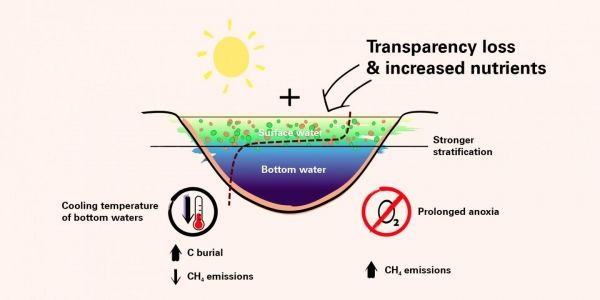A research team led by the University of Basel and the Université de Montréal examined how the ongoing climate warming affects the “behavior” of lakes. The researchers found out why, in near-bottom waters, lakes may even cool down despite warming at the surface, and what the consequences are for the production and emission of greenhouse gases. The results of the study were published in the most recent edition of the journal Limnology and Oceanography Letters.
Lakes play an important role in the global carbon cycle, acting as large natural bioreactors. The temperature of a lake represents an important constraint on the amount of carbon dioxide and methane it emits into the atmosphere. It was generally assumed that global warming stimulates microbial respiratory processes and the production of these greenhouse gases, while at the same time reducing the carbon storage in lake sediments. An international research team has now examined these interactions more closely and discovered unexpected effects.
The research project not only targeted the direct effects of global warming, but also the indirect ones. The main focus of the investigations was the water temperature and greenhouse gas production in the deeper parts of the lakes. “We don’t want to question the fundamentals of thermodynamics. There is no doubt that the rates of respiratory metabolic processes in lakes are generally higher at increased water temperatures,” explains Professor Moritz Lehmann from the Department of Environmental Sciences at the University of Basel. “However, climate change will not cause every lake to warm up everywhere.”
Read more at University of Basel
Image: Effects of climate change on the water temperature, water transparency, density stratification and oxygen content in lakes. In contrast to clear lakes, nutrient-rich and thus more turbid lakes develop a "thermal shield" that can cause the deeper part of the lake to cool down. (Credit: University of Basel)


